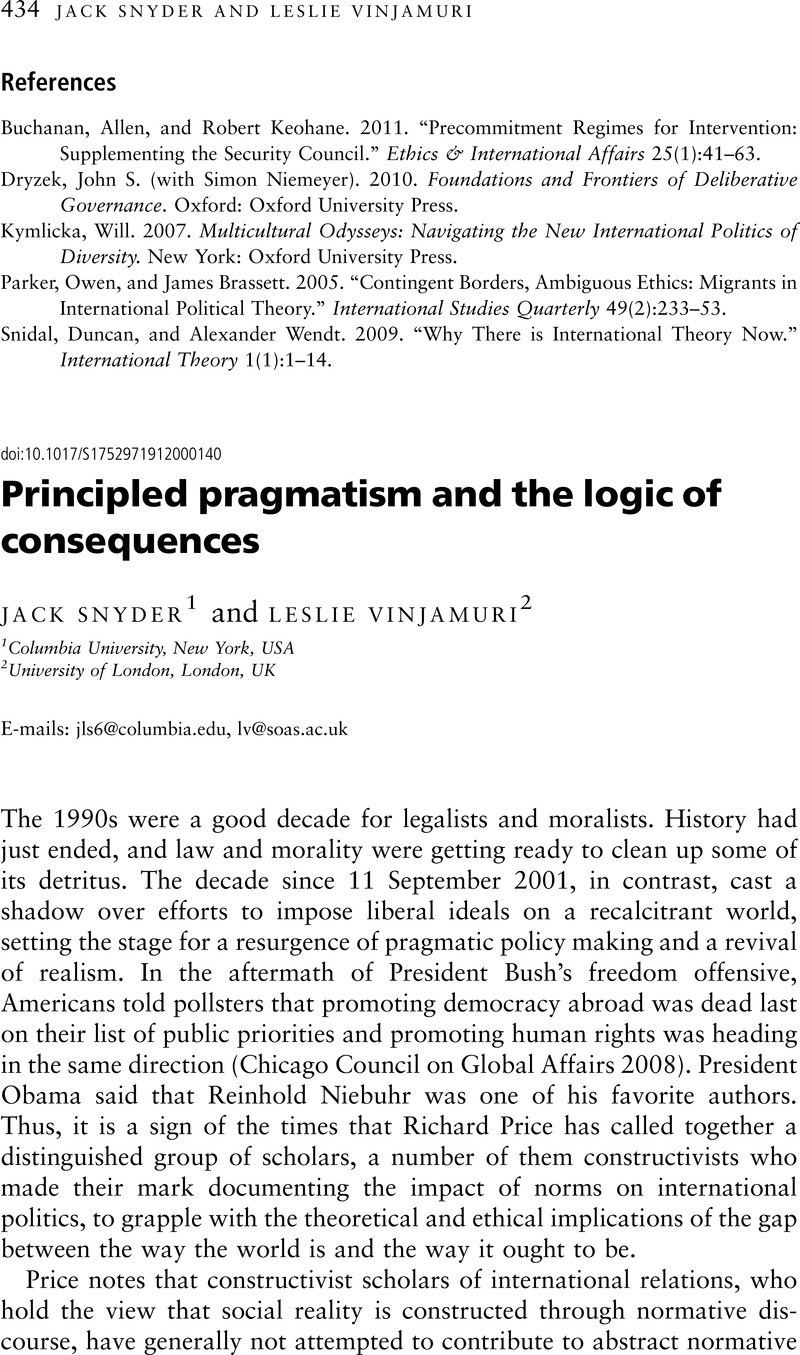Crossref Citations
This article has been cited by the following publications. This list is generated based on data provided by Crossref.
Devellennes, Charles
2014.
Utility contra utilitarianism: Holbach’s international ethics.
Journal of International Political Theory,
Vol. 10,
Issue. 2,
p.
188.
Vinjamuri, Leslie
and
Snyder, Jack
2015.
Law and Politics in Transitional Justice.
Annual Review of Political Science,
Vol. 18,
Issue. 1,
p.
303.
Rodman, Kenneth A.
2015.
Intervention and the ‘Justice Cascade’: Lessons from the Special Court for Sierra Leone on Prosecution and Civil War.
Human Rights Review,
Vol. 16,
Issue. 1,
p.
39.
Juncos, Ana E.
2017.
Resilience as the new EU foreign policy paradigm: a pragmatist turn?.
European Security,
Vol. 26,
Issue. 1,
p.
1.
Marks, Michael P.
2018.
Revisiting Metaphors in International Relations Theory.
p.
193.
Jain, Rajendra K.
and
Pandey, Shreya
2019.
Shaping the EU Global Strategy.
p.
101.
Cusumano, Eugenio
and
Cooper, Nathan
2020.
Projecting Resilience Across the Mediterranean.
p.
295.
Tocci, Nathalie
2020.
Resilience and the role of the European Union in the world.
Contemporary Security Policy,
Vol. 41,
Issue. 2,
p.
176.
Pennisi di Floristella, Angela
2020.
Security cooperation in and with Asia: towards a pragmatic turn in the EU’s security policy?.
European Security,
Vol. 29,
Issue. 2,
p.
170.
Pennisi di Floristella, Angela
2021.
EU Trade Policy: Principles versus Pragmatism. The Cases of Vietnam and Cambodia.
The International Spectator,
Vol. 56,
Issue. 2,
p.
132.
Melvin, Jess
Wahyuningroem, Sri Lestari
and
Pohlman, Annie
2023.
Resisting Indonesia’s Culture of Impunity: Aceh’s Truth and Reconciliation Commission.
Lerner, Adam B.
2024.
Global injustice and the production of ontological insecurity.
European Journal of International Relations,
Vol. 30,
Issue. 3,
p.
595.
Saha, Aniruddha
2024.
Stigmatization or Victimization? The Iran–US Nuclear Relationship from 2015 to 2021.
Journal of Global Security Studies,
Vol. 10,
Issue. 2,
Morales Ruvalcaba, Daniel
2025.
National Power in Sino-Caribbean Relations: CARICOM in the Geopolitics of the Belt and Road Initiative.
Chinese Political Science Review,
Vol. 10,
Issue. 1,
p.
28.



